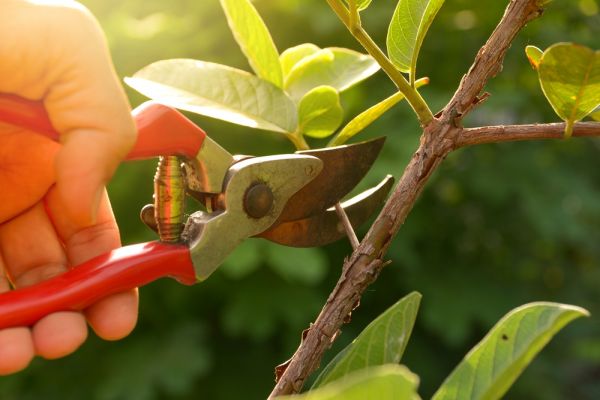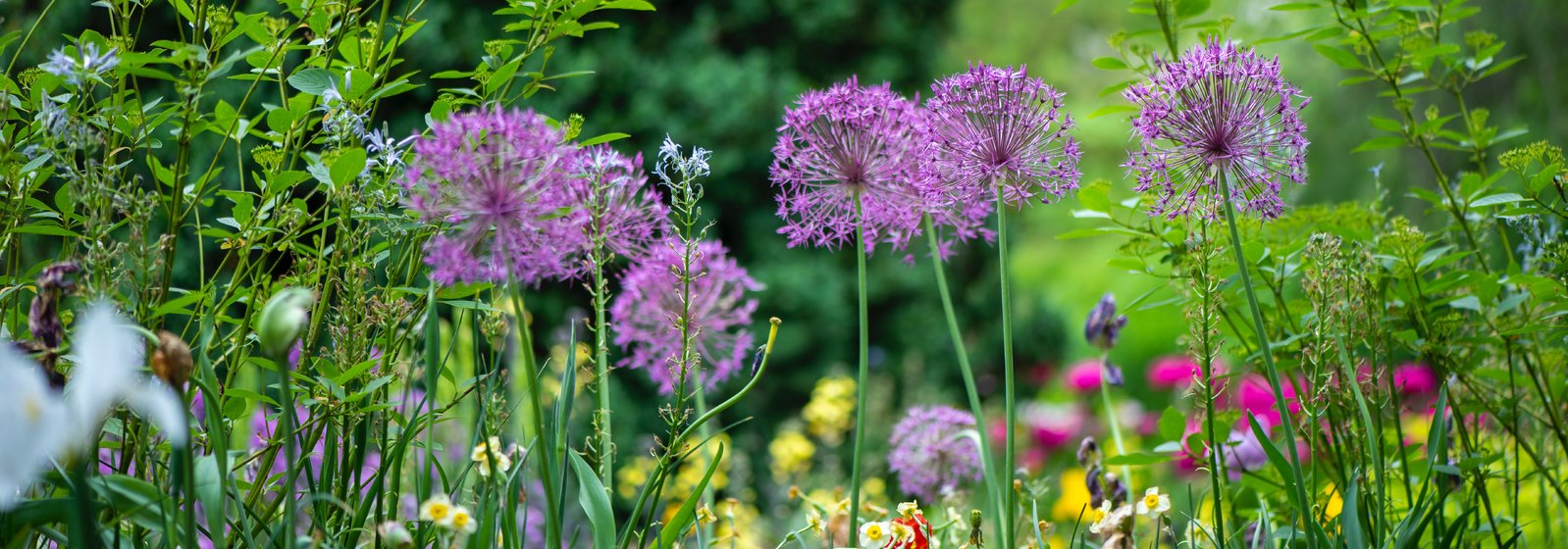
‘That plant really needs cutting back.’ How often have you looked at your garden and said those words? It can be hard to know what to cut back when, and how much to chop, so here are a few tips for pruning shrubs, trees and perennials.
Cutting back perennials
It’s long been gardening tradition to cut back all herbaceous perennials for winter – often known as ‘putting the garden to bed’. Recently though, we’re often advised to leave perennials standing through the winter to provide interest in the garden. And it’s true that in dry winters, frost-edged perennials do look spectacular, but a typical wet winter more often means a garden full of dismal, dilapidated stems. For this reason, most perennials are probably best cut back in autumn, before the ground gets too wet for gardening.
However, it’s worth remembering that many insects overwinter in hollow flower stems, and seedheads are a useful food source for birds. So when you’re cutting back, consider leaving a few perennials to stand to provide homes for wildlife, cutting them back in spring instead.
Tips on cutting back perennials
- Cut back hardy herbaceous perennials in autumn, cutting the flowering stems to ground level, and remove any dead leaves.
- Don’t cut back evergreen perennials like hellebores or euphorbias, although it’s a good idea to remove tired old leaves. This is especially true for hellebores, where removing the old leaves reduces the spread of hellebore leaf spot and makes the winter flowers more visible.
- Leave half-hardy perennials like penstemons to stand over winter, as the stems will protect new growth from frosts, and cut them back to the new growth in spring.
- If you’re not sure whether to cut back or not, leave the plants to stand until new shoots appear in spring, then remove the old growth.
Tips on pruning shrubs and trees
Pruning shrubs and trees can give them a better shape, and encourages them to produce more flowers and fruit. Pruning times for different plants vary greatly, so it’s always best to check individual plants’ requirements before starting to chop. However, there are a few general rules worth following for all pruning jobs:
- Use sharp secateurs – a clean cut reduces the risk of infection for the plant
- Work slowly, taking off a little at a time and keep standing back to check the overall appearance of the tree or shrub
- When cutting a large branch, it’s easier and safer to cut it back in sections from the end.
- Cut flush to branches and don’t leave stubs that will die back and can introduce infection.
- Take extra care when using ladders, and only take on jobs that you can safely manage. For pruning jobs that require working at height, it’s often best to call a professional tree surgeon.
Whatever gardening job you need to tackle, you’ll find all the tools you need in our centre, including loppers, saws, secateurs and much more. Come and visit us today!

